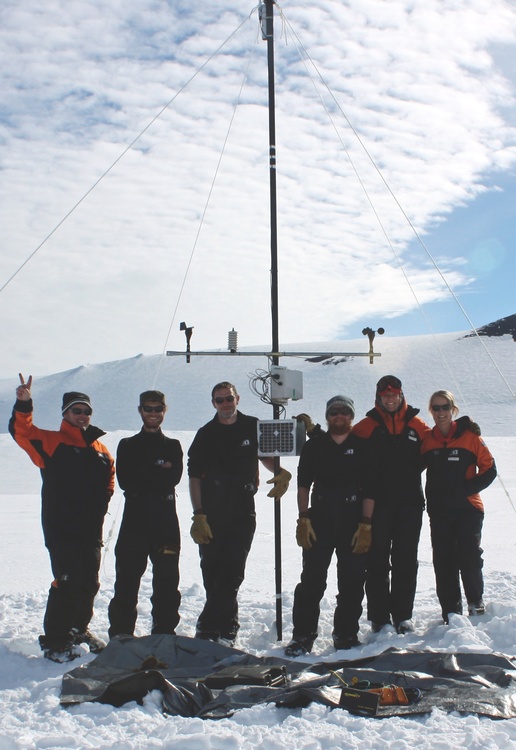Position: Professor and Associate Head, School of Physical & Chemical Sciences, University of Canterbury. Former Director of Gateway Antarctica.
Field: Atmospheric physics
Dr Adrian McDonald is a senior lecturer with the School of Physical & Chemical Sciences at University of Canterbury. His research involves using a range of remote sensing observations from radar and satellite instruments.
Adrian is originally from Birmingham in the UK. He began his science career with a BSc (Hons) in physics and went on to do a PhD in atmospheric physics at the University of Wales Aberystwyth. Adrian held a number of postdoctoral positions in universities around the United Kingdom and also worked in the defence industry in the UK. During this time, Adrian used lidar (laser radar) to research the propagation of atmospheric waves into the stratosphere, worked on optical remote sensing of the Earth’s surface and used synthetic aperture radar data to examine properties of the Earth’s surface. In his last position in the UK, he worked at Alenia Marconi Systems as a systems engineer, which involved the development of radar systems on board missiles.
The research that I do on the interaction between atmospheric dynamics, the movement of the winds and chemistry and how that interacts with climate wouldn’t be possible without satellites.
Adrian took up a position at the University of Canterbury in 2001. His research focuses on the Antarctic atmosphere, Antarctic climate and the ozone hole. Adrian travels to Antarctica for 2 or 3 weeks most years to do fieldwork, supported by Antarctica New Zealand, where he sets up weather stations to validate the data he gets from satellites. Adrian believes that the ozone hole is on the road to recovery and could be fully recovered by as early as 2050. That’s the good news. However, the shrinking ozone layer may lessen the strong winds that help to keep the Antarctic cold.
In addition to research, Adrian teaches undergraduate and graduate courses in physics and supervises graduate students.
Adrian was also part of the Deep South Challenge, heading up the ‘Processes and Observations’ programme.
This article is based on information current in 2013 and updated in 2025.
Related content
Read about Adrian's research into satellites measuring sea ice thickness in Antarctica.
Useful links
See Adrian's profile on the University of Canterbury's website and on the Deep South Challenge.
Read this 2024 article The dynamics of the atmosphere from Antartica New Zealand. Adrian has been part of this long-term research study from the University of Canterbury that has been examining the dynamics in the atmosphere above Antarctica, producing one of the longest records for Antarctica's atmospheric winds and wind speed fromit's start in 1982.


